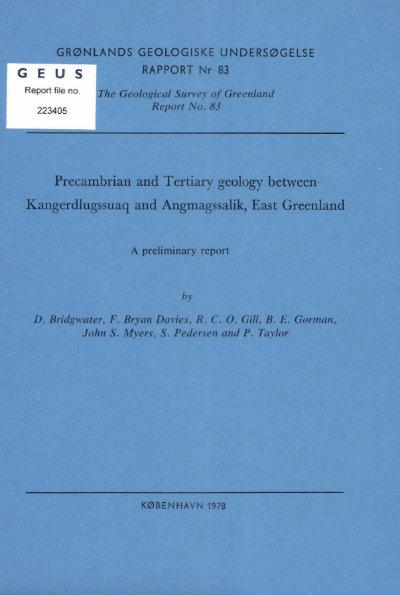Precambrian and Tertiary geology between Kangerdlugssuaq and Angmagssalik, East Greenland
DOI:
https://doi.org/10.34194/rapggu.v83.7516Abstract
The preliminary results of a reconnaissance survey of the coast between Kangerdlugssuaq and Angmagssalik are summarized. The Archaean gneiss complex between Kangerdlugssuaq and Kap Japetus Steenstrup is fairly uniform and comprises granitoid gneisses with inclusions of supracrustal rocks, layered basic igneous complexes and older gneisses. Inland areas generally show low deformation states, large scale recumbent folds, and rocks are in granulite facies, whereas a belt of stronger deformation, steep foliation and amphibolite facies matamorphism extends alng the outer coast. To the south of Kap Japetus Steenstrup, Archaean rocks are strongly deformed in the Nagssugtoqidian mobile belt and granulite facies rocks are retrograded to amphibolite facies, except in pods of low deformation, between 2800--2600 m.y. ago. Large bodies of diorite and granodiorite (the Blokken gneisses) were emplaced and metamorphosed in amphibolite facies 2400 m.y. ago, and around Angmagssalik a complex of Ieuco-norite and charnockite was emplaced in granulite facies and caused coarse recrystallization of the adjacent gneisses. Post-tectonic igneous intrusions ranging from ultramafic to granite were intruded 1600 m.y. ago. Numerous Tertiary dykes and plutonic complexes ranging from gabbro to granite were emplaced along the coast between Tasilaq and Kangerdlugssuaq 60-35 m.y. ago.
Downloads
Published
Issue
Section
License
This article is distributed under a CC-BY 4.0 licence, permitting free redistribution and reproduction for any purpose, even commercial, provided proper citation of the original work. Author(s) retain copyright over the article contents.


